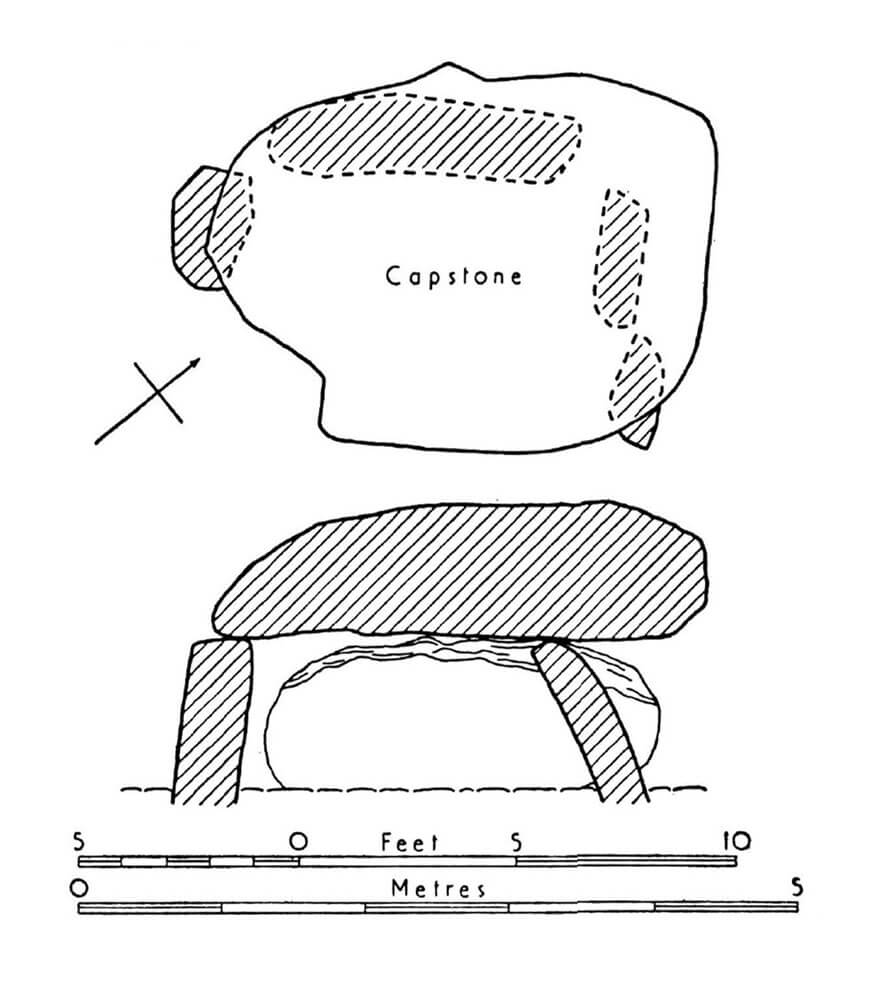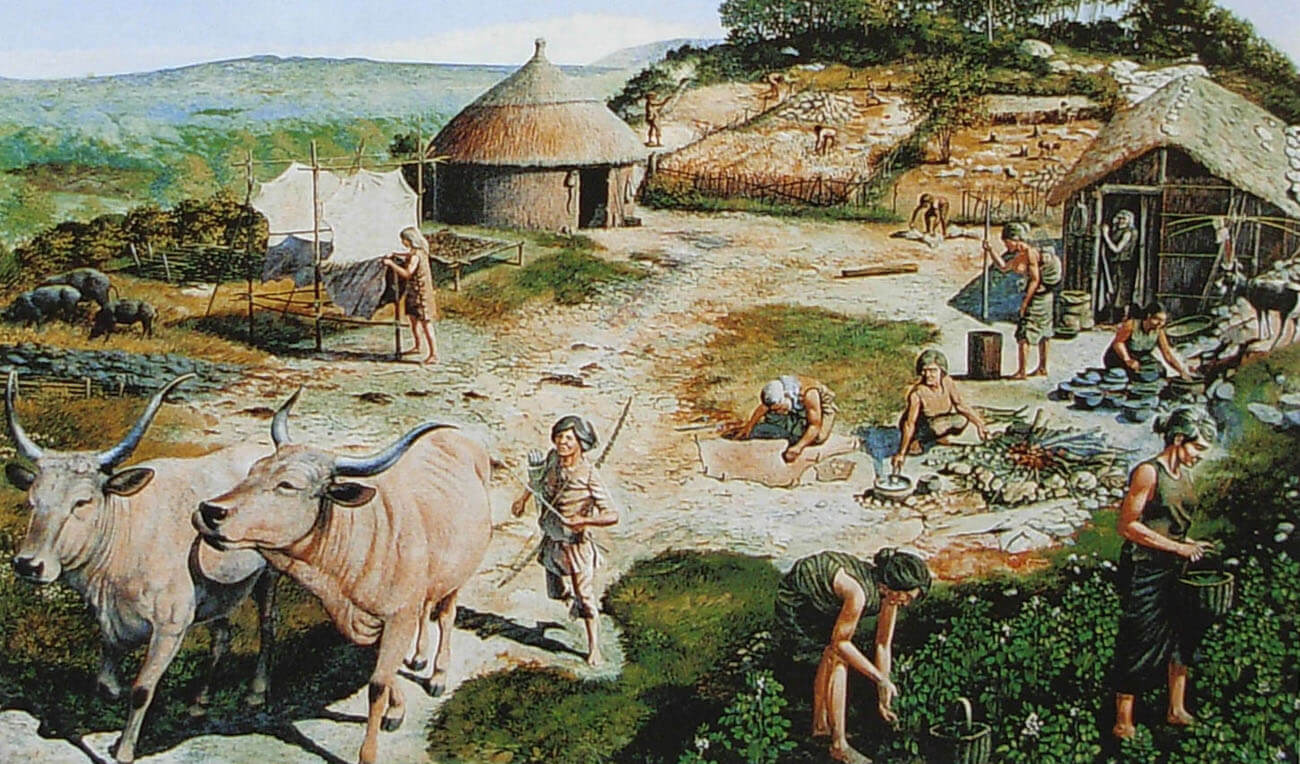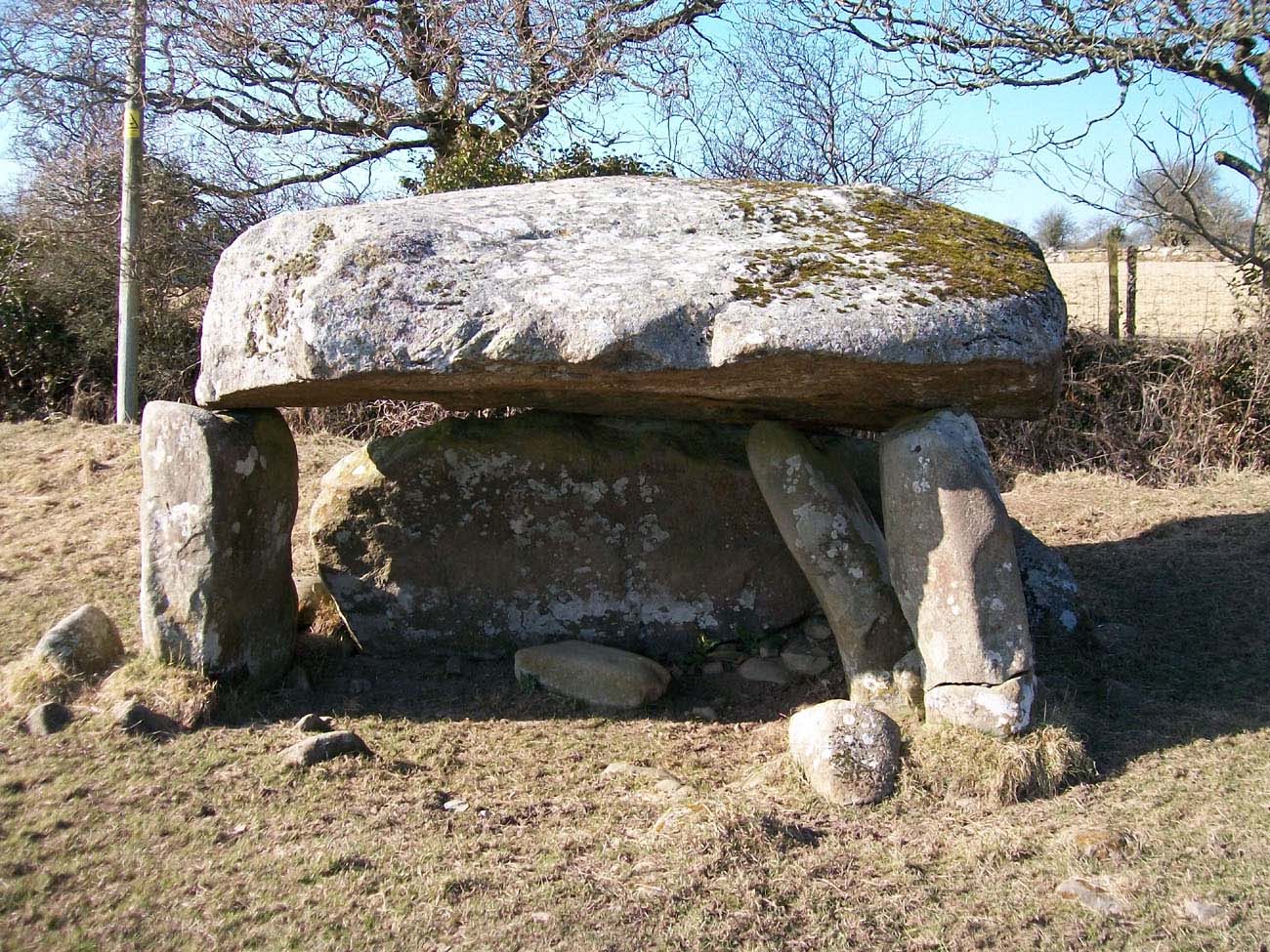History
The tomb in Rhoslan, also called Cefn Isaf, was built during the Neolithic period, around 4400 – 2900 BC. Constructions of this type were used by early-agricultural communities, as collective burial sites and for perhaps religious ceremonies. The decline in the use of megalithic tombs occurred around 2500 B.C. During the coming Bronze Age, until about 1500 B.C. in Britain, other burial methods, including those related to stone circles, gain more importance.
Architecture
The burial chamber was made of at least four, and probably more stones, placed vertically with their longer sides, supporting the largest capstone that served as the ceiling. Measuring 2.4 meters along its axis from north-east to south-west and 1.8 meters wide at the north-east tip, it was originally accessible from the north. The entrance located there was 0.7 meters wide and 4.9 meters long. It was to be covered with two stone slabs, the outer one rested on four stones and the other on three stones and one of the first four. The internal height of the chamber was 1.1 meters. A capstone with a flat bottom, of a maximum thickness of 1 meter, and a roughly rectangular plan, 3.5 meters long and 2.75 meters wide, was selected as the ceiling. The entire chamber was originally covered with a mound of earth or stones (cairn) of unknown shape.
Current state
Only the burial chamber with a magnificent capstone with a missing southern corner has survived to the present day. Among the smaller stones supporting it, one was removed before 1869, another broke, and the eastern one fell over in 1863 (it was restored to its original position during renovation works), which means that the chamber is now open to the south-east. The capstones of the northern entrance have not survived, and only four of the previous seven are visible among the stones that made its walls. The stone and earth mound has been completely dispersed.
bibliography:
Castleden R., Neolithic Britain: New Stone Age sites of England, Scotland and Wales, London 1992.
The Royal Commission on The Ancient and Historical Monuments and Constructions in Wales and Monmouthshire. An Inventory of the Ancient and Historical Monuments in Caernarvonshire, volume II: central, the Cantref of Arfon and the Commote of Eifionydd, London 1960.



